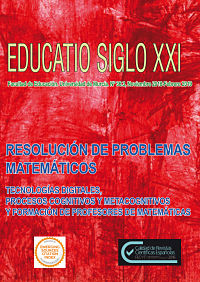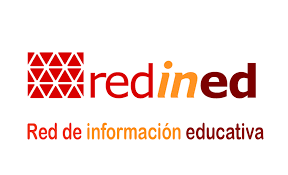Assessment of digital learning objects in Moodle
Abstract
This study presents the application of automated analysis processes to digital objects in online music learning, mediated through a telematic platform. Theoretically, the study is based on the application of the principles of e-learning, personalized education and implementation of automated processes for analysing educational data. Specifically, this study taps into the application of such techniques to initial test assessment, with a view to measuring levels of subject knowledge. The analysis of the information is undertaken from the data collected in a tool for making online courses, Moodle. From the analysis of these data a model, called k-means, emerges which classifies the different levels of musical knowledge. The model establishes three profiles regarding acquisition of music knowledge: high, medium and low.
Downloads
-
Abstract1249
-
PDF (Español (España))755
References
Aydin, C.C., Tirkes, G. (2010). Open Source Learning Management Systems in Distance Learning. TOJET: The Turkish Online Journal of Educational Technology, 9(2), 175-184.
Bernardo, J.B. et al. (2014). Educación personalizada: principios, técnicas y recursos. Logroño: Síntesis.
Bullock, S. (2016). Digital technologies in teacher education. From mythologies to making. In Kosnik, C.; White, S.; Beck, C.; Marshall, B.; Goodwin, A. Lin & Murray, J. (eds.), Building Bridges. Rethinking Literacy Teacher Education in a Digital Era (pp. 2-16). Rotterdam: Sense Publishers.
Calderero Hernández, J.F. et al. (2014). Una nueva aproximación al concepto de educación personalizada y su relación con las TIC. Teoría de la Educación. Educación y Cultura en la Sociedad de la Información, 15(2), 131-151.
Celebi, M.E., Kingravi, H.A. & Vela, P.A. (2013). A comparative study of efficient initialization methods for the k-means clustering algorithm. Expert Systems with Applications, 40(1), January, 200-210.
Chiappe-Lavarde, A., Hine, N. & Martínez-Silva, J.-A. (2015). Literatura y práctica: una revisión crítica acerca de los MOOC. Comunicar, 44 (XXII), 9-18. DOI http://dx.doi.org/10.3916/C44-2015-01G
Coll, C. y Monereo, C. (2008). Psicología de la educación virtual. Madrid: Morata.
Cuthbert, A.J. (2003). Wise learning Communities. Design Considerations. In A.K. Renninger y W. Shumar (Eds.), Building Learning communities. Learning and change in cyberspace (pp. 215-246). Cambridge: Cambridge University Press.
Chan, M.E., Galeana, L. y Ramírez, M.S. (2007). Desarrollo de objetos de aprendizaje basado en patrones. Brasil: Virtual Educa.
Estadística (2016). Portal de la Universidad de Granada sobre estadística.
Recuperado el 12 de Enero de 2016 de http://wdb.ugr.es/~bioestad/guia-spss/practica-8/#2
Etscheidt, S. & Curran, C. (2012). Promoting Reflection in Teacher Preparation Programs: A Multilevel Model. Teacher Education and Special Education, 35(1), 7-26. (http://doi.org/dk 53x2).
Feldman, D., Schmidt, M. & Sohler, C. (2013). Turning big data into tiny data: constant-size coresets for k-means, PCA and projective clustering. SODA '13 Proceedings of the Twenty-Fourth Annual ACM-SIAM Symposium on Discrete Algorithms, New Orleans, Louisiana, pp. 1434-1453.
Himonides, E & King, A. (2014). Proceedings of the Sempre MET2014: Researching Music, Education, Technology: Critical Insights. International Music Education Research Centre, iMerc. Institute of Education University of London.
Housand, B.C. y Housand, A.M. (2012). The role of technology in gifted students' motivation. Psychology in the Schools, 49(7), 706-715.
Hwang, G.J. et al. (2012). Development of a personalized educational computer game based on students’ learning styles. Educational Technology Research and Development, 60(4), August, 623-638.
Irigoien, I. y Arenas, C. (2006). Clasificación: Análisis de clusters (clustering). En B. Sierra (Coord.), Aprendizaje automático: conceptos básicos y avanzados. Aspectos prácticos utilizando el software Weka. Madrid: Pearson Prentice Hall.
Jorgensen, E. R. (2008). The art of teaching music. Indianápolis: Indiana University Press.
Kearney, M.S. & Levine, P.B. (2015). Early Childhood Education by MOOC: Lessons from Sesame Street. NBER Working, Paper No. 21229, June. (DOI: 10.3386/w21229).
Kop, R. (2011). The challenges to connectivist learning on open online networks: Learning experiences during a massive open online course. The International Review of Research in Open and Distance Learning, 12(3), 19-38.
Lin, C.F. et al. (2013). Data mining for providing a personalized learning path in creativity: An application of decision trees. Computers & Education, 68, October, 199-210.
Lin, Y. et al. (2012). An improved clustering method based on k-means. Paper presented in 9th International Conference on Fuzzy Systems and Knowledge Discovery (FSKD), Sichuan, 29-31 May, 734-737. DOI: 10.1109/FSKD.2012.6234296.
Mairal, J. et al. (2010). Online learning for matrix factorization and sparse coding. Journal of Machine Learning Research, 11, 19-60.
McAfee, A. et al. (2012). Big Data. The management revolution. Harvard Business Review, 90(10), 61-67.
Monedero-Moya, J.-J., Cebrián-Robles, D. y Desenne, Ph. (2015). Usabilidad y satisfacción en herramientas de anotaciones multimedia para MOOC. Comunicar, 44(XXII), 55-62. DOI: http://dx.doi.org/10.3916/C44-2015-06
Montgomery, A. et al. (2015). Blending for student engagement: Lessons learned for MOOCs and beyond. Australasian Journal of Educational Technology , 31(6), 657-670.
Moodle (2016). Modular Object-Oriented Dynamic Learning Environment. Recuperado el 10 de Febrero de 2016 de http://www.moodle.org
Pang, J., Jie, L. & Xu, F. (2014). Study on the Group Cooperative Innovation Based on WEB2.0. Journal of Software, 9(3), 613-620.
RAND Corporation (2014). Early progress: Interim research on personalized learning. Seattle, WA: The Bill and Melinda Gates Foundation.
Redding, S. (2014a). Personal Competencies in Personalized Learning. Center on Innovations in Learning, Temple University, Philadelphia, PA. http://www.centeril.org/publications/Personalized_Learning.pdf (16-05-2016).
Redding, S. (2014b). Personal Competency. A Framework for Building Students’ Capacity to Learn. Philadelphia, PA: Temple University, Center on Innovations in Learning. http://www.centeril.org/publications/Personal_Compentency_Framework.pdf (16-05-2016).
Redding, S. (2014c). The something other: Personal competencies for learning and life. Philadelphia, PA: Temple University, Center on Innovations in Learning. http://eric.ed.gov/?id=ED558074 (16-05-2016).
Rivera, Claudia (2014). Objetos de aprendizaje: una primera Mirada . Infotecarios. http://www.infotecarios.com/objetos-de-aprendizaje-una-primera-mirada/
Roberts-Mahoney, H., Means, A.J. & Garrison, M.J. (2016). Netflixing human capital development: personalized learning technology and the corporatization of K-12 education. Journal of Education Policy. DOI: http://dx.doi.org/10.1080/02680939.2015.1132774
Sadovaya, V.V.; Korshunova, O.V. & Nauruzbay, Z.Z. (2016). Personalized Education Strategies. Mathematics Education, 11(1), 199-209.
Sagitova, R.R. (2014). Training students to be autonomous learners. International Journal of Humanities Education, 12(1), 27-34.
Sandler, S. (2012). People v. ‘personalization’: Retaining the human element in the high-tech era of education. Education Week, 31(22), 20-22.
Selwyn, N. (2012). Ten suggestions for improving academic research in education and technology. Learning, Media and Technology, 37(3), 213–219.
Sharif, A., & Magrill, B. (2015). Discussion forums in MOOCs. International Journal of Learning, Teaching and Educational Research, 12(1), 119-132.
Shechtman, N. et al. (2013). Promoting grit, tenacity, and perseverance: Critical factors for success in the 21st century. Washington, DC: U.S. Department of Education, Department of Educational Technology.
Spector, J.M. (2013). Emerging Educational Technologies and Research Directions. Journal of Educational Technology & Society, 16(2), April, 21-30.
Tseng, S.-F. et al. (2016). Who will pass? Analyzing learner behaviors in MOOCs. Research and Practice in Technology Enhanced Learning, 11(8), 1-11. DOI: 10.1186/s41039-016-0033-5
Twyman, J. (2014). Competency-based Education: Supporting Personalized Learning. Philadelphia, PA: Center on Innovations in Learning. http://www.centeril.org/connect/ resources/Connect_CB_Education_Twyman-2014_11.12.pdf (16-05-2016).
Vollenbroek, W. et al. (2014). Learning Education: An ‘Educational Big Data’ approach for monitoring, steering and assessment of the process of continuous improvement of education. Paper presented in European Conference in the Applications of Enabling Technologies, 20-21 November 2014, Glasgow, Scotland.
Wolf, M. (2010). Innovate to education: System [re]design for personalized learning. A report from the 2010 symposium. Washington, DC: Software & Information Industry Association. Retrieved from http://siia.net/pli/ presentations/PerLearnPaper.pdf (16-05-2016).
Yang, S. et al. (2011). A collaborative multimedia annotation tool for enhancing knowledge sharing in CSCL. Interactive Learning Environments, 19(1), 45-62. DOI: 10.1080/10494820.2011.528881
Original work publishes in this journal is subject to the following terms:
1. Murcia University Press (the publishing house) holds the copyright of the publishes work, and favours and allows their reutilization under the use license stated in point 2.
© Servicio de Publicaciones, Universidad de Murcia, 2015
2. Work is published in the electronic edition under a license (Creative Commons Reconocimiento-NoComercial-SinObraDerivada 4.0 España (legal text). They can be copied, used, disseminated, transmitted and publicly presented, as long as: i) authorship and original publication source is acknowledged (journal, publishing house and URL of the work); ii) are not used for commercial purposes; iii) the existence and specifications of this use license is stated.
3. Conditions for self-archive. Authors are allowed and encouraged to disseminate electronically the pre-pint (before review) and/or post-print (accepted for publication) versions of their work before their publication since that favours earlier circulation and dissemination resulting in an increased chance for the authors to be cited and for the work to reach a bigger share of the academic community. Colour: RoMEO: green.







